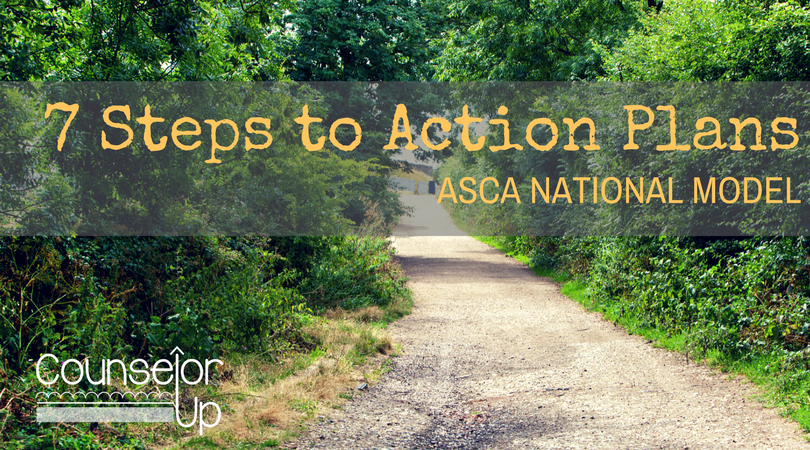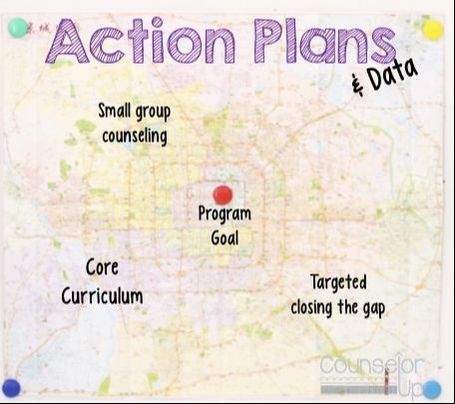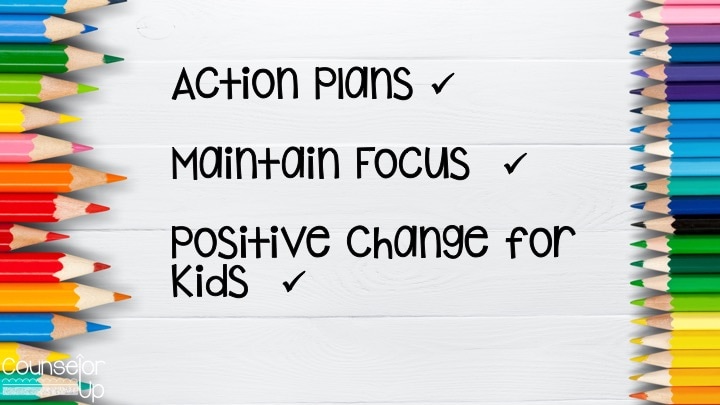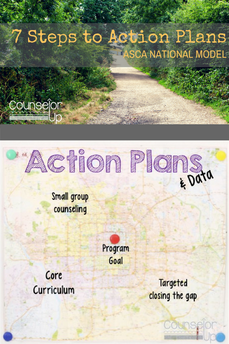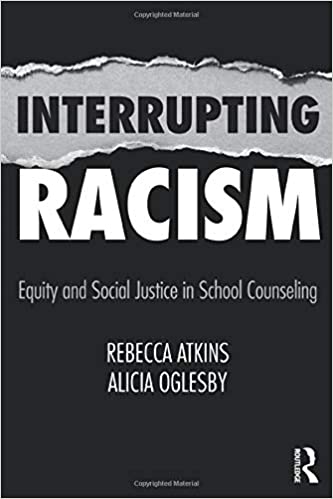Video Transcript
When creating action plans, we are writing our map for the major work that we plan to do each year. To see more about setting program goals, check out the Program Goal video. The action plans are designed to include details about how you will reach your program goals through core curriculum, group, and targeted closing the gap plans. Lastly, we are making a plan for the data that you will collect so that you end the year with the data you really want to see and haven’t wasted a lot of effort on collecting data that doesn’t inform your work.
Curriculum Action Plan
After you’ve documented what you’re already doing, take a look at your plan and ask the following questions:
- Will these lessons and activities support my program goals?
- Do these lessons and activities support students as they transition into and out of the school?
- Have you conducted a needs assessment to indicate the needs of each grade level?
- Are there unique needs occurring in a specific grade level that you want to address with your core?
When you have created a plan that will lay the groundwork for the knowledge, skills, and attitudes that students need to succeed, you are ready to begin! A few helpful tips: it’s fine to include lessons related the school counseling program that are delivered by others in the building. For instance, a lesson about Mix It Up day that your classroom or homeroom teachers deliver could be included. Don’t include lessons for adults like parent nights or professional development. This plan is for student learning only. Continually analyze and evaluate the effectiveness of your core instruction. This is a working document that is revised and improved.
Let’s take a look at the core curriculum action plan template. In the template, you include:
- Grade level and lesson topic
- ASCA Mindsets and Behaviors: you will select 2-3 mindset and behavior standards for each lesson. To learn more about mindsets and behaviors, check out the tutorial video
- A brief description of curriculum and materials that you plan to use. You want the reader to be able to understand what you will be doing without going into too much detail
- The start and end date
- Process data: the projected number of students affected.
- Perception data: how you will determine the attitudes, knowledge and skills obtained in the lesson. This might be a pre/post test, an exit ticket, or a role play. Be creative about how you will collect this data. In core lessons, you might try to make the data collection component a natural part of the lesson like an assignment or an exit ticket so that you can manage the collection of data all your lessons.
- Outcome data: how does this lesson relate to the achievement, attendance, and or behavior data for this grade level? Remember that you can collect outcome data for a series of lessons or lessons individually. There should be a connection between the objectives of the lesson and the type of data being collected. An example might be to compare the number of office referrals for peer conflict between first half of the year and second half.
Reality Check – you may not be able to collect perception and outcome data for every single lesson. Start with just a few lessons and work your way up. Include all the lessons that you teach in your plan but concentrate on a manageable amount of data to collect so that you can build a plan that is sustainable. Eventually, you want to collect process data for every lesson, perception data for most lessons, and link outcome data as much as possible when there is a natural connection.
Small Group Action Plan
To begin, determine how many groups are manageable for each counselor to conduct. Once you have a total number of groups, look at your schools’ data to determine the greatest needs that can be supported through small group counseling. Consider students who have attendance, achievement, or behavior concerns. You can also use a group needs assessment for teachers, administrators, or parents to determine which groups to offer. Once you have a plan for the groups that you will offer, identify students who would be the best fit for each group. There may be students who show a need but for whom small group counseling is not a good fit. If that is the case, make an alternate plan for the student to ensure that their needs are met.
Once you have your list of planned groups, you can complete the Small Group Plan template:
- Grade level and group topic
- ASCA Mindsets and Behaviors: you will select about 2-3 mindset and behavior standards for each lesson, with some overlap. To learn more about mindsets and behaviors, check out the tutorial video
- A brief description of curriculum and materials that you plan to use. You want the reader to be able to understand what you will be doing without going into too much detail.
- The start and end date
- Process data: the projected number of students who will be in the small group. If you run multiple sections of the same group, it’s fine to include all students in one line. For instance, if you have 4 academic achievement groups running simultaneously, write the total number of students in this group here.
- Perception data: how you will determine the attitudes, knowledge and skills obtained in the lesson. In Small groups, you will typically use a pre/post test.
- Outcome data: How will you determine the effectiveness of the group? Compare achievement, attendance, or behavior data before the group to the same data after the group. Keep it simple!
Closing the Gap Action Plans
Once you have identified the program goal and targeted group of students, it is time to design your implementation plan. Interventions should be evidence based, grounded in research, driven by the mindsets and behaviors, and fall within the work of school counselors. Interventions may include a variety of activities like parent contacts, individual student planning, small group counseling, and data monitoring. They also may include systemic changes like changing the way honors courses are recommended or increasing teacher’s professional development in trauma informed schools.
Once you have an idea of your plan, you can create a Closing the Gap Action Plan. Begin by writing the target group and the data to identify students at the top of the plan.
- Activities: write a list of activities that you plan to implement
- ASCA Mindsets and Behaviors: you will select about 1-2 mindset and behavior standards that most directly link to your goal.
- A brief description of curriculum and materials that you plan to use. You want the reader to be able to understand what you will be doing without going into too much detail.
- The start and end date
- Process data: the projected number of targeted students
- Perception data: how you will determine the attitudes, knowledge and skills obtained by the targeted students? You will most likely use a pre/post test tool for students but could also use teacher and parent surveys.
- Outcome data: The outcome data should be spelled out in your program goal or how you targeted students. For instance, if you targeted students for attendance, you would be looking at attendance as the outcome goal.

